Bindloss Dawes Architects’ Autobarn houses a collection of Porsches
The Autobarn by Bindloss Dawes Architects provides serene space to store and service a clutch of classic Porsches
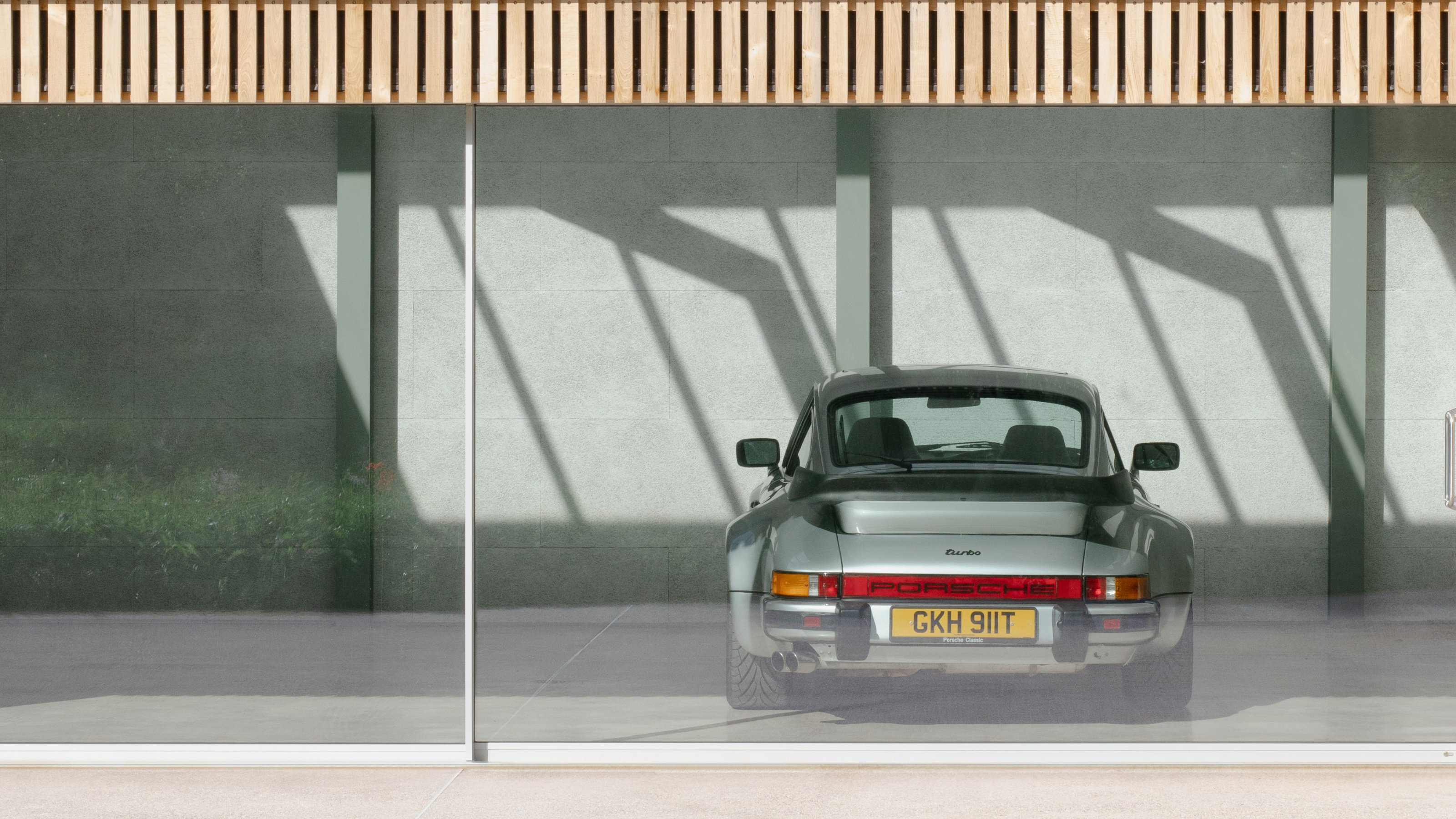
Bindloss Dawes’ ‘Autobarn’ states its function pretty clearly, but the ‘loose-fit’ steel and timber structure is intended to be ultra-flexible from the outset.
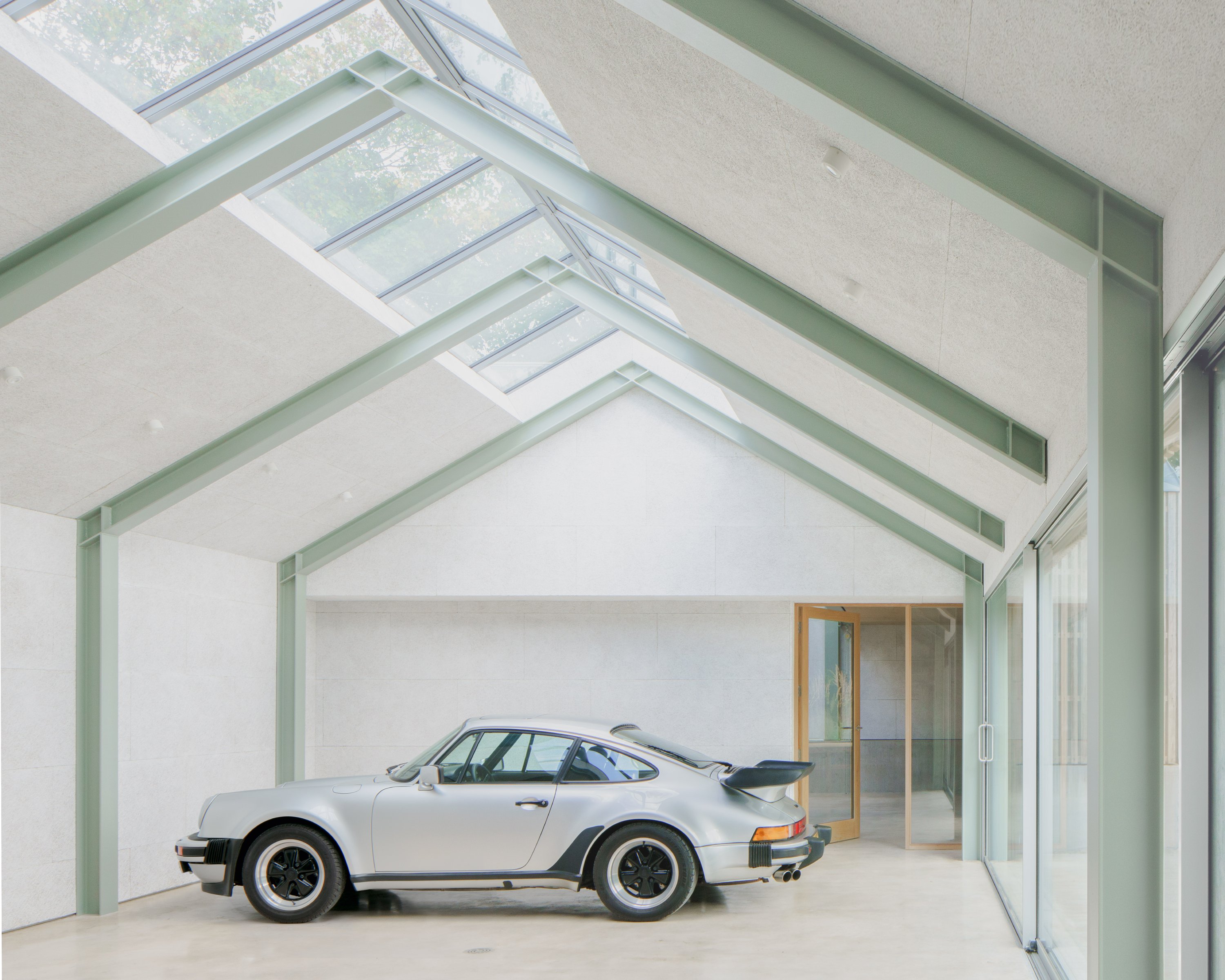
Autobarn: a home for cars
The site is in the grounds of a Grade II-listed 18th-century house in southern England, and the brief called for a home for the client’s classic car collection, a structure that went above and beyond a conventional garage and became something more akin to a gallery, albeit a place where work could still be undertaken.
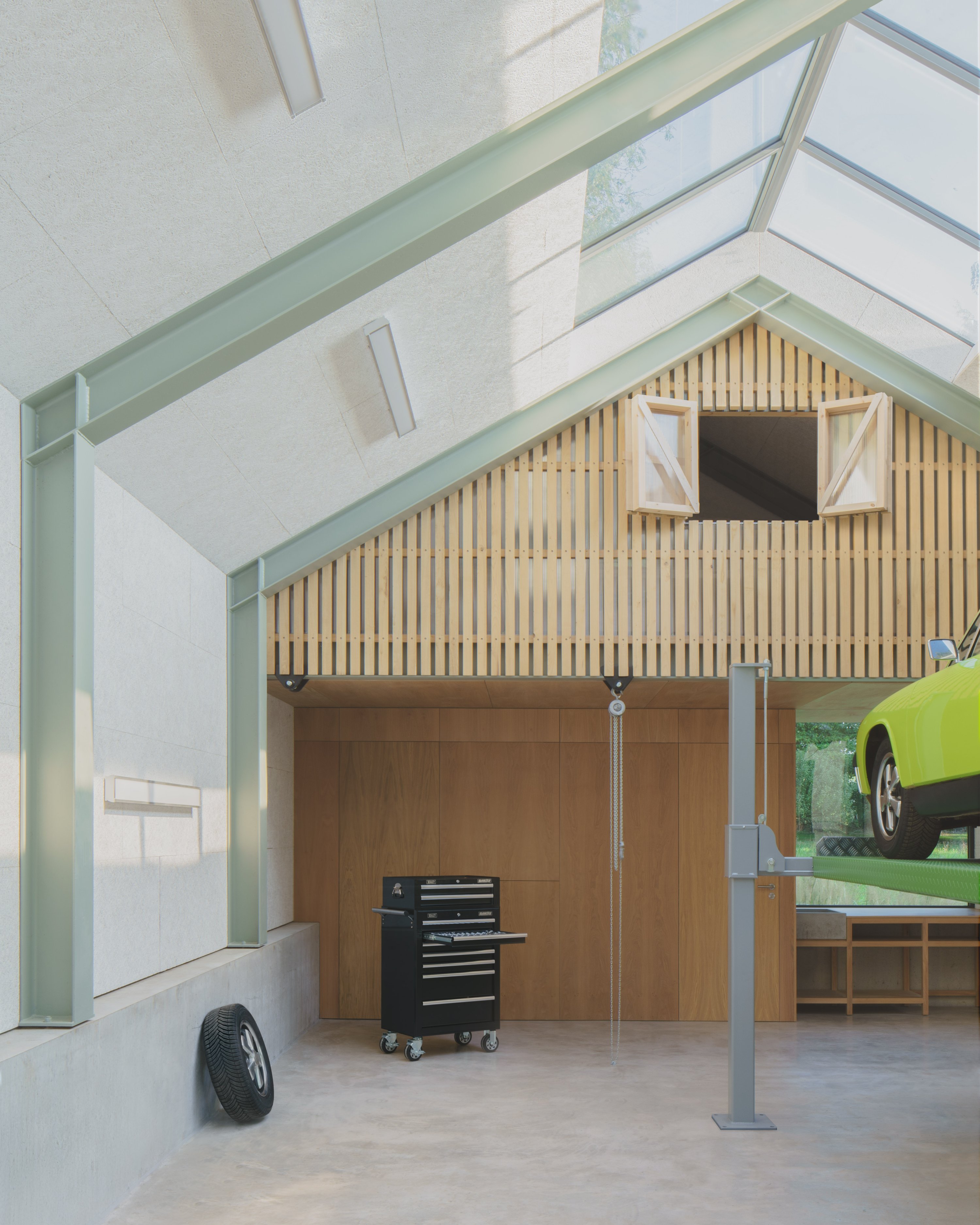
The 165 sq m project is split into two components, set at right angles to each other. Pitched roofs acknowledge the existing house and the local vernacular, but the façade treatment is very different. The five-bay garage adjoins the two-car workshop space, complete with car lift, storage for tools and parts, and a utility area.
All the spaces are top lit, with a precisely detailed steel frame emphasising the pitch and coming together beneath the apex. Access is via large sliding doors, all the way to a 7m, three-bay timber screen on the garage structure, which is joined by a sliding glass door for added security.
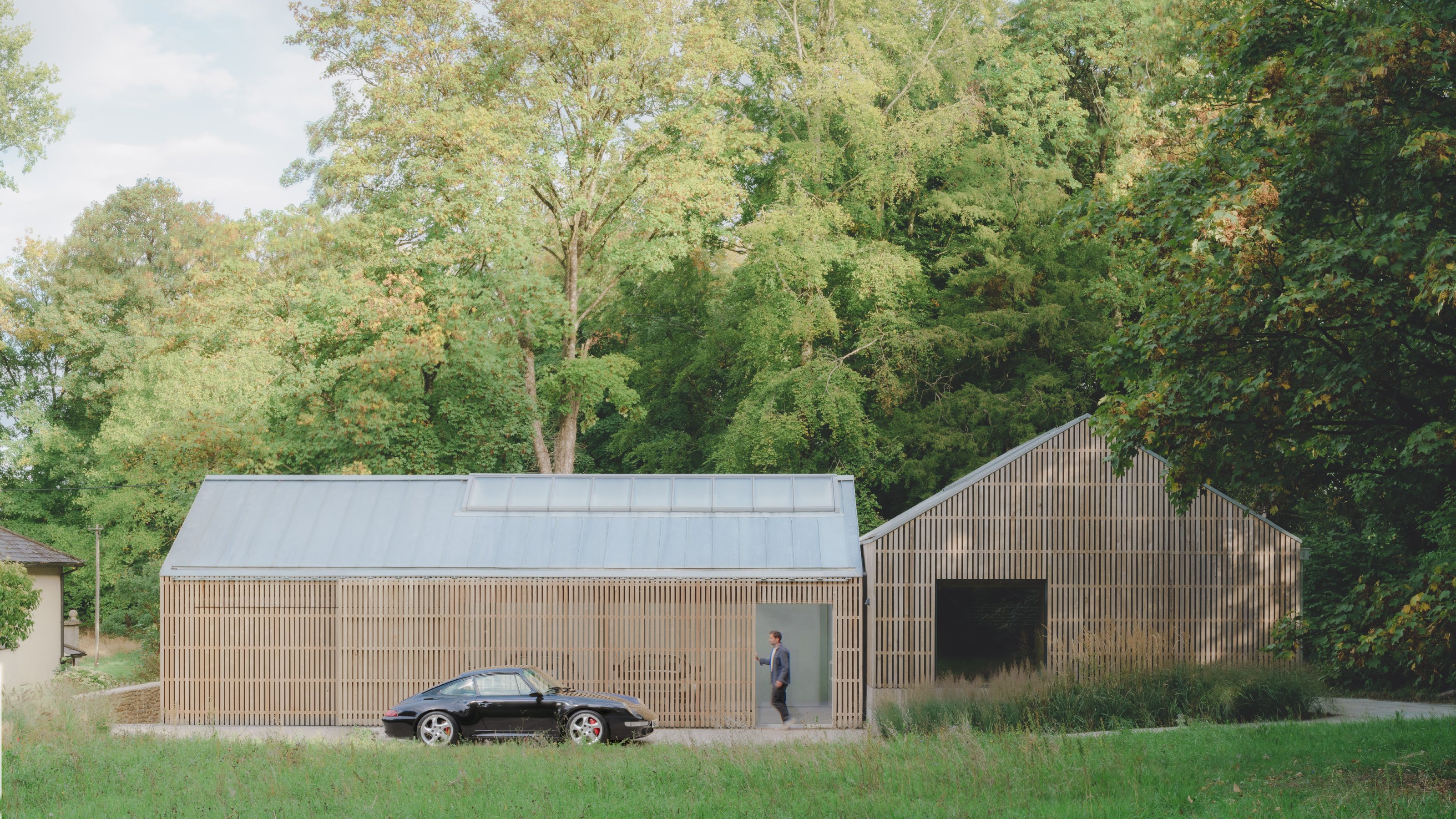
The client’s passion is classic Porsches, with several generations of the iconic 911 represented, alongside a 1970s-era 914. ‘Our aim was to create a building that appeared elegant and familiar at first glance, but then opened up to reveal something surprising and unexpected,’ says architect Oliver Bindloss. ‘Using the barn typology helped us to achieve this, creating simple timber forms that you might expect to find throughout the countryside, but then introducing some theatre with the big sliding doors, opening up the building to reveal the car collection inside.’
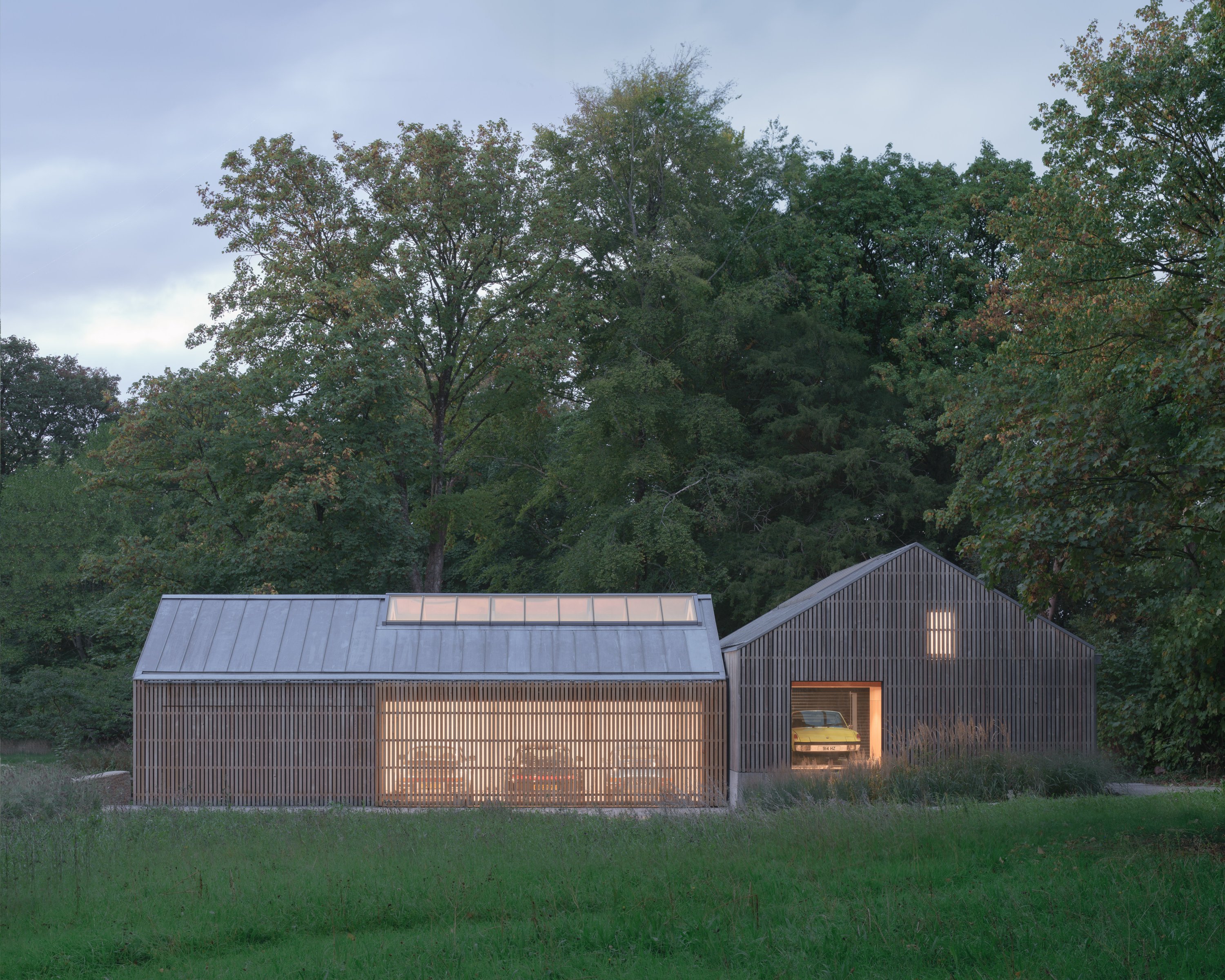
The barn analogy is furthered by the use of straightforward, quasi-agricultural materials like concrete and recycled wood strand board, as well as a zinc roof. The sweet-chestnut cladding and meticulous interior joinery reflect the timeless details of the cars themselves.
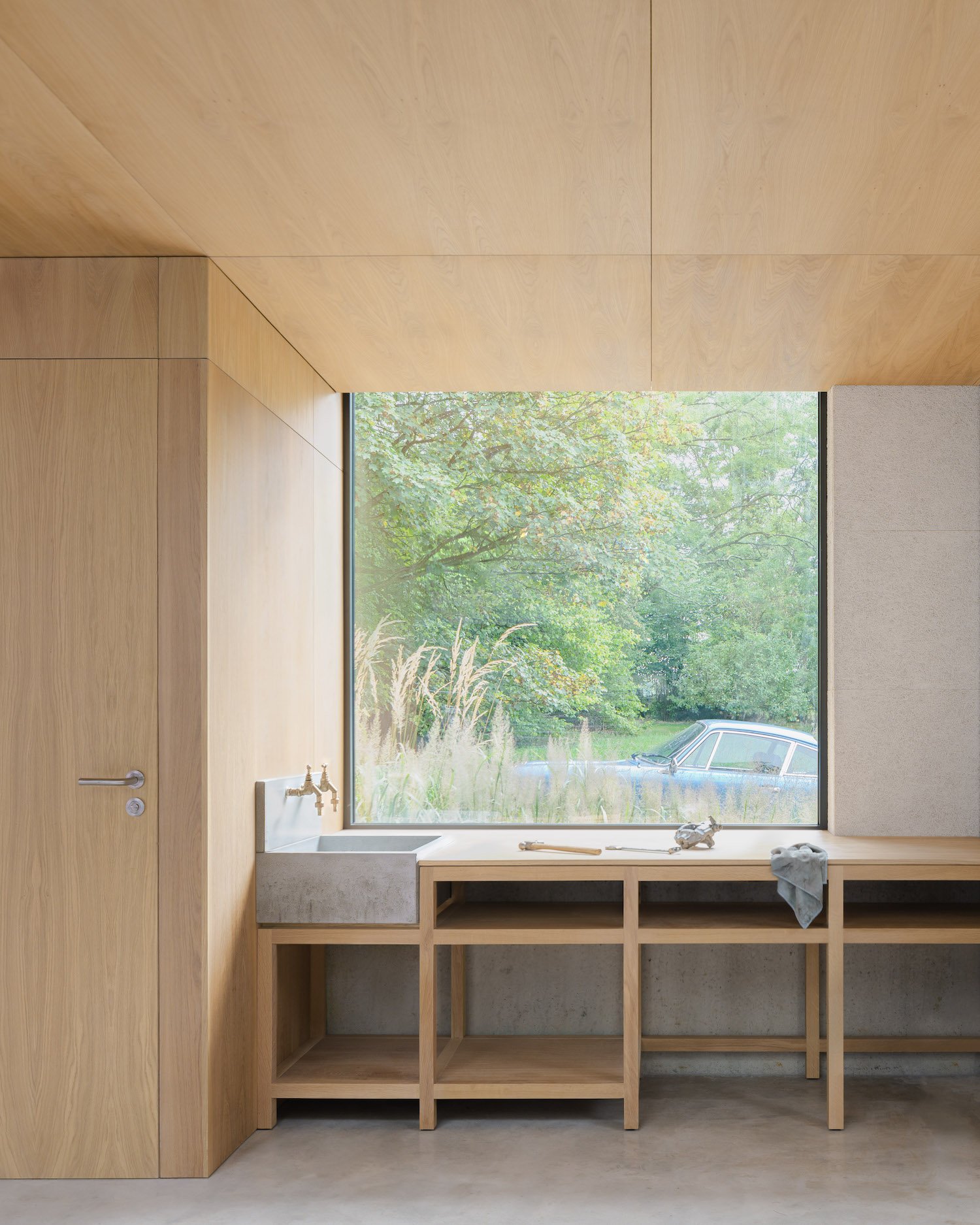
The adaptability of the structure is guided by futureproof design elements, like the underfloor heating and air source heat pump that could be switched on if needed, with additional services concealed within the panelling, should the Autobarn’s future use change.
Wallpaper* Newsletter
Receive our daily digest of inspiration, escapism and design stories from around the world direct to your inbox.
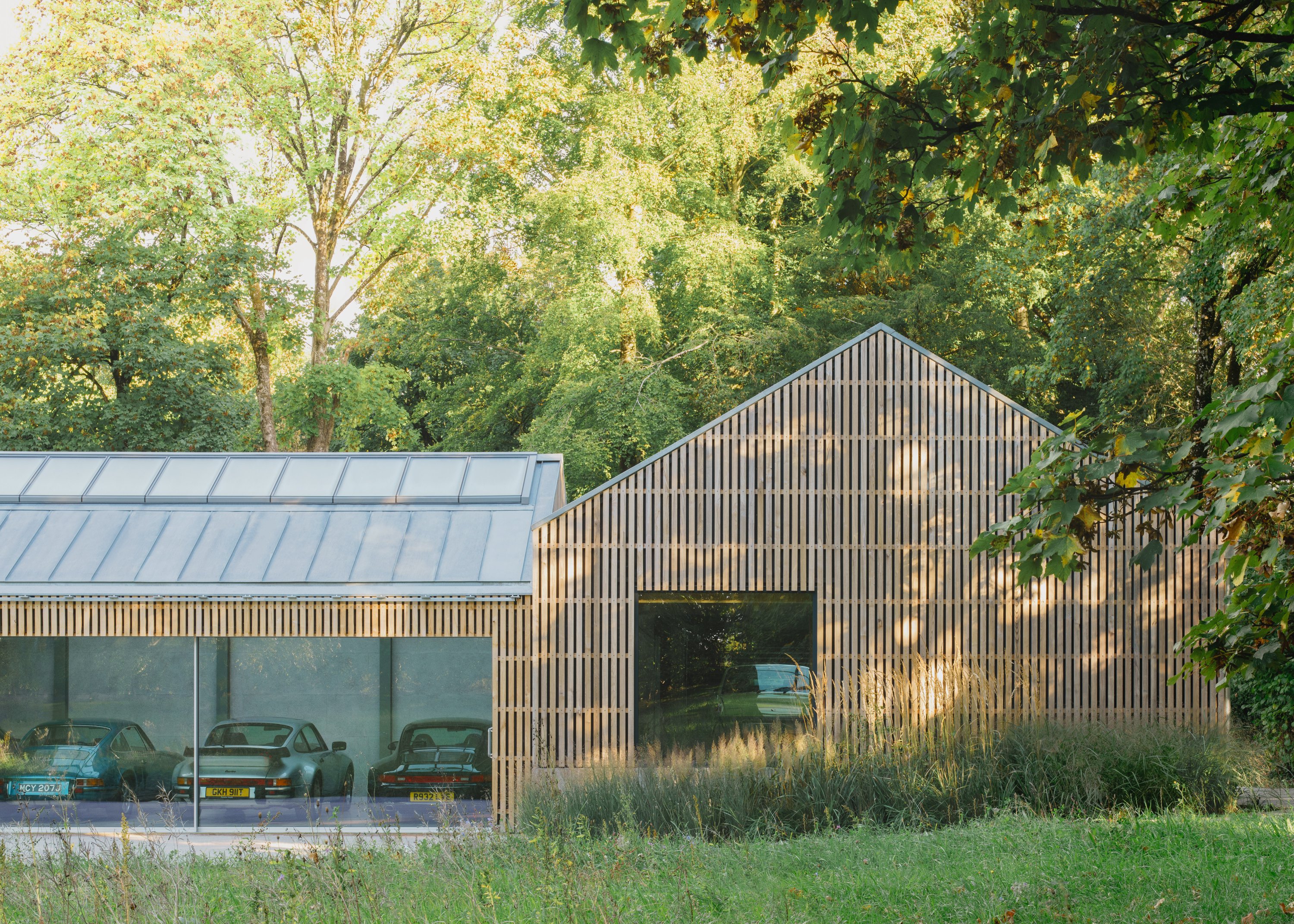
Bindloss and George Dawes founded their Somerset-based studio in 2018, following working together at Jamie Fobert Architects. The client describes the Autobarn project as a ‘close collaboration’ with architects, a way of realising a ‘long-term dream to bring my car collection together under one roof, and to start all the restoration projects I’ve been planning’.
Jonathan Bell has written for Wallpaper* magazine since 1999, covering everything from architecture and transport design to books, tech and graphic design. He is now the magazine’s Transport and Technology Editor. Jonathan has written and edited 15 books, including Concept Car Design, 21st Century House, and The New Modern House. He is also the host of Wallpaper’s first podcast.
-
 Japan in Milan! See the highlights of Japanese design at Milan Design Week 2025
Japan in Milan! See the highlights of Japanese design at Milan Design Week 2025At Milan Design Week 2025 Japanese craftsmanship was a front runner with an array of projects in the spotlight. Here are some of our highlights
By Danielle Demetriou
-
 Tour the best contemporary tea houses around the world
Tour the best contemporary tea houses around the worldCelebrate the world’s most unique tea houses, from Melbourne to Stockholm, with a new book by Wallpaper’s Léa Teuscher
By Léa Teuscher
-
 ‘Humour is foundational’: artist Ella Kruglyanskaya on painting as a ‘highly questionable’ pursuit
‘Humour is foundational’: artist Ella Kruglyanskaya on painting as a ‘highly questionable’ pursuitElla Kruglyanskaya’s exhibition, ‘Shadows’ at Thomas Dane Gallery, is the first in a series of three this year, with openings in Basel and New York to follow
By Hannah Silver
-
 This 19th-century Hampstead house has a raw concrete staircase at its heart
This 19th-century Hampstead house has a raw concrete staircase at its heartThis Hampstead house, designed by Pinzauer and titled Maresfield Gardens, is a London home blending new design and traditional details
By Tianna Williams
-
 An octogenarian’s north London home is bold with utilitarian authenticity
An octogenarian’s north London home is bold with utilitarian authenticityWoodbury residence is a north London home by Of Architecture, inspired by 20th-century design and rooted in functionality
By Tianna Williams
-
 What is DeafSpace and how can it enhance architecture for everyone?
What is DeafSpace and how can it enhance architecture for everyone?DeafSpace learnings can help create profoundly sense-centric architecture; why shouldn't groundbreaking designs also be inclusive?
By Teshome Douglas-Campbell
-
 The dream of the flat-pack home continues with this elegant modular cabin design from Koto
The dream of the flat-pack home continues with this elegant modular cabin design from KotoThe Niwa modular cabin series by UK-based Koto architects offers a range of elegant retreats, designed for easy installation and a variety of uses
By Jonathan Bell
-
 Are Derwent London's new lounges the future of workspace?
Are Derwent London's new lounges the future of workspace?Property developer Derwent London’s new lounges – created for tenants of its offices – work harder to promote community and connection for their users
By Emily Wright
-
 Showing off its gargoyles and curves, The Gradel Quadrangles opens in Oxford
Showing off its gargoyles and curves, The Gradel Quadrangles opens in OxfordThe Gradel Quadrangles, designed by David Kohn Architects, brings a touch of playfulness to Oxford through a modern interpretation of historical architecture
By Shawn Adams
-
 A Norfolk bungalow has been transformed through a deft sculptural remodelling
A Norfolk bungalow has been transformed through a deft sculptural remodellingNorth Sea East Wood is the radical overhaul of a Norfolk bungalow, designed to open up the property to sea and garden views
By Jonathan Bell
-
 A new concrete extension opens up this Stoke Newington house to its garden
A new concrete extension opens up this Stoke Newington house to its gardenArchitects Bindloss Dawes' concrete extension has brought a considered material palette to this elegant Victorian family house
By Jonathan Bell